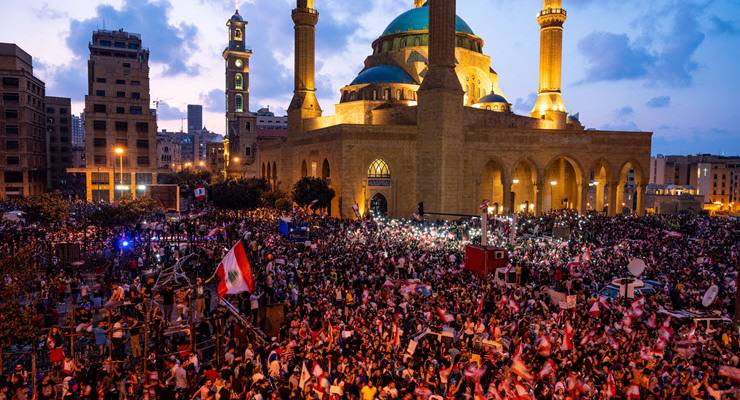
I grew up in Tripoli, Lebanon, in the 1990s. I remember seeing mothers begging in marketplaces while clutching their babies, and dirty-clothed street kids selling gum or polishing shoes. I remember intermittent electricity, rubbish dumped on streets, broken traffic lights, crumbling roads and bullet-ridden buildings.
That was almost 25 years ago, but the endemic poverty in Lebanon has persisted. Hardly anything has changed. It came as no surprise when pictures of mass protest against the Lebanese government popped up on my TV.
The continuing protests are in response to recent austerity measures, including a WhatsApp tax (which would give Lebanon access to an $11 billion pledge by international donors). But there’s more to it than that. The protests are a consequence of the seething anger and long-standing disenchantment with the dire economic situation in the country.
Unemployment and debt are sky-high, council services are basically non-existent, state medical services and education are extremely underfunded and corruption is rife. Getting a job — especially in any government department, including the army and police force — generally requires a wahsta, a connection.
The wahsta system is a form of clientelism which was left intact after World War II and has its roots in tribal tradition. Even though Lebanon adopted a laissez faire open market system, clientelism ensured that the political and business elites (or zu’ama) continued to benefit. Protesters are now accusing politicians of stealing and plundering Lebanon’s wealth for the last 30 years.
After Lebanon’s independence in 1943, the country became the centre for finance and trade in the Middle East. Foreign investment, a strong banking sector, and European political and economic ties had ensured Lebanon’s relative economic success and stability up until the civil war in 1975. As Toufic Gaspard points out, Lebanon was the only laissez faire economy of the developing world during this period. But the system did not stand the test of time.
Reconstruction from the civil war began in the early 1990s, but internal political tensions between political blocs, and external tensions with Israel, always kept Lebanon at the precipice. In 2006, a 33-day war broke out between Hezbollah and Israel, exacting a heavy toll both in casualties and infrastructure.
Then, just five years later, Syria was enveloped in its own civil war. A massive influx of Syrian refugees poured into Lebanon with current estimates at 1.5 million (almost a third of the Lebanese population). Lebanon also still houses thousands of Palestinian refugees, which has also put pressure on the government. But it does not adequately explain Lebanon’s failing economy. The economy was failing before the Syrian crisis and the 33-day war.
Many Lebanese people in Australia have extended families in Lebanon who are bearing the brunt of its struggling economy. It’s common to hear that a cousin with a great education can’t get a job, or that they are trying to emigrate. Desperate to join their family in Australia, many are stuck in a country that could be described as a failed state.
On Sunday there was a Lebanese solidarity protest in Sydney’s Martin Place. Social media has been overflowing with images and videos of Lebanese flags in Beirut. Some of the Arabic hashtags read “Lebanese uprising”, “revolution”, “all government must go” and “time for accountability”.
Politicians have generally been responsive. Lebanese Prime Minister Saad Hariri gave his government 72 hours to come up with solutions. The reform package the Hariri government introduced has since been rejected. Some ministers have resigned.
These protests can’t be brushed off as sectarian politics; they have been driven by all sectors of Lebanese society. The protesters have zero trust in the establishment and have been silent for way too long against the black hands of Lebanese politics. It’s time the Lebanese people were able to put some food on the table.








Crikey is committed to hosting lively discussions. Help us keep the conversation useful, interesting and welcoming. We aim to publish comments quickly in the interest of promoting robust conversation, but we’re a small team and we deploy filters to protect against legal risk. Occasionally your comment may be held up while we review, but we’re working as fast as we can to keep the conversation rolling.
The Crikey comment section is members-only content. Please subscribe to leave a comment.
The Crikey comment section is members-only content. Please login to leave a comment.